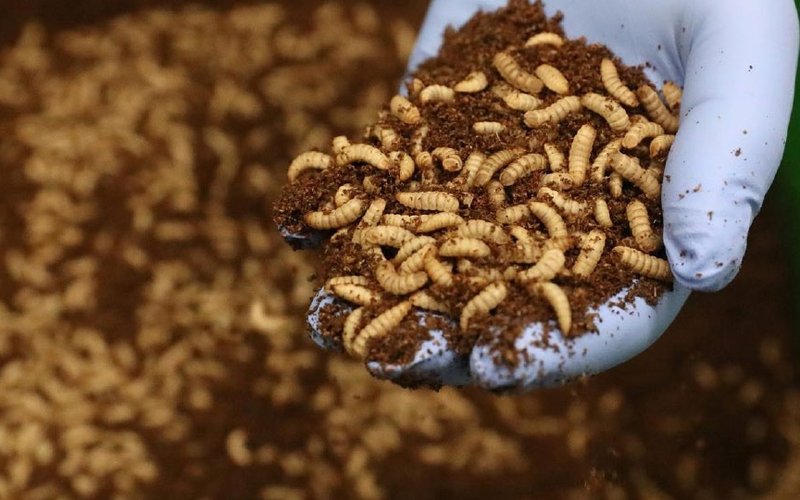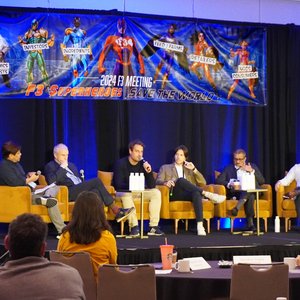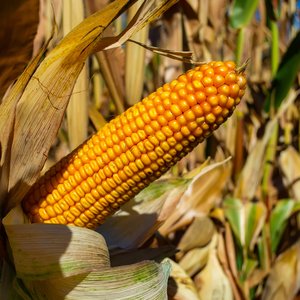Southeast Asia has emerged as the top region to produce insects for feed. Climate conditions and lower labor costs have been key drivers in setting up new production facilities in the region.
The Asian Food and Feed Insect Association (AFFIA) is a non-profit organization representing the interest of its members from the industry and academia working with insects as food and feed in Asia. AFFIA is currently composed of members from Malaysia (11), Thailand (10), Indonesia (9), Singapore (6) and other countries (4), with 90% of farmed insects for feed applications involving black soldier fly, according to its latest survey.
Currently, 55% of producers consider themselves beyond the pilot stage while 76% started operations in 2019 or later. Production was categorized as more than 10,000 tonnes (3%), 1,000-4,000 tonnes (7%) and under 1,000 tonnes per year (87%). Products included whole insect meal, defatted insect meal, whole dried larvae, whole live larvae, insect oil, compound/mixed feed with insect ingredients and frass or fertilizer.
The majority of AFFIA members are based in Malaysia, Singapore or Thailand, which have been the major centers of the insect industry in recent years. Historically, Thailand has farmed the most insects – predominantly crickets – so it’s no surprise that they’re one of the biggest centers. Singapore hosts many company headquarters, but high costs mean that very little production happens on the island. “The trend we have seen is the growing number of countries that members represent, now with 17 different nationalities,” Nick Piggott, AFFIA president, told Aquafeed.com in a recent interview.
Food vs. feed & aquafeed vs. pet food
The potential market size for insect protein inclusion is estimated at 19.3 million tonnes in Asia. “This derived scenario assumes inclusion rates of 5% for each of aqua, poultry and swine feed and 20% for pet food,” Piggott explained. But how are these markets competing between them and also with food protein demand?
Food vs. feed
“The food and feed markets for insect-based products are generally complementary rather than directly competitive. This is because the applications in human food and animal feed are quite distinct. Insect-based products in the human food market are primarily focused on nutritional supplements, niche gourmet products, and alternative protein sources. Examples would be crickets and mealworms. These are often sold at a premium and cater to specific consumer segments interested in sustainability and alternative diets,” Cody Lee, secretary general at AFFIA, explained.
In the feed market, insect-based products are used as a protein-rich ingredient in feeds for poultry, swine, and aquaculture. “The drivers here are different, often related to the nutritional benefits (e.g. functional benefits like enhanced immunity and absorption of black soldier fly protein) and the need to replace traditional protein sources like fishmeal and soybean meal,” said Lee.
Pet food vs. aquafeed
The pet food and aquafeed sectors both utilize insect-based products but serve different end markets with different growth dynamics.
“The pet food industry has been a significant absorber of insect-based meal, driven by the increasing demand for sustainable and hypoallergenic ingredients. Pet owners are looking for premium, environmentally friendly options, which has spurred the use of insects as a novel protein source. For many of AFFIA's black soldier fly producers, their current focus is in this segment as pet food manufacturers pay more for the insect meal and require smaller quantities to start with compared to aquafeed,” said Lee.
“In aquafeed, the use of insect meal is also growing but is more regulated. The potential for insect meal here is enormous due to the need to replace fishmeal and support the sustainability of aquaculture. However, the uptake is dependent on regulatory approvals and the scaling of insect production to meet large volume demands of aquafeed manufacturers at competitive prices frequently benchmarked against fishmeal. It is noteworthy that quite a number of AFFIA's members have formulated or started producing small amounts of aquafeed and multiple companies' research has shown good results. However, many are unable to enter this segment due to the inability to produce in a volume and price acceptable to aquafeed manufacturers,” Lee said.
“As a result, the pet food industry is absorbing more insect meal than aquafeed. This is due to several reasons. The pet food sector has faced fewer regulatory hurdles compared to aquafeed, especially in regions like Europe and North America, making it easier for insect-based products to enter the market. Moreover, pet owners are often more open to innovative products compared to the more conservative aquaculture industry. While both sectors have significant potential for using insect meal, the current production capacities and cost structures favor the pet food market, where consumers are willing to pay a premium for sustainable products,” Lee stated.
“While there is some level of competition between the food and feed markets for insect-based products, they largely serve complementary sectors. The pet food industry currently has a higher absorption rate of insect meal compared to aquafeeds, but both sectors present substantial growth opportunities for the use of insect-based ingredients,” Piggott said.
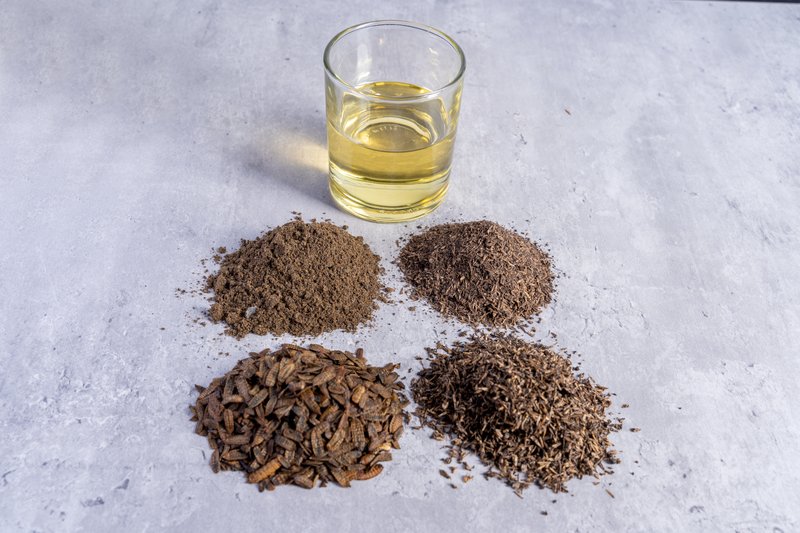
The EU market
One of the key advances for Asian insect producers in the past few months has been the EU approval for imports of insect-based products from Asia, and according to AFFIA, they bring a series of advantages.
“Firstly, to set a baseline, Asian producers exporting into Europe are inspected with the same degree of rigor as European producers, so buyers are getting exactly the same quality and safety standards from Asia as they are from Europe. Secondly, the manufacturing economics of producing in Asia means that there is, and probably always will be, a cost advantage to Asian products over European products,” Piggott said.
“Thirdly, since the insects in question are tropical, there is less requirement for energy-intensive heating, lighting and climate control than in Europe. The raw materials used are different, meaning that the sustainability of Asian-produced insect products is likely to be significantly better than European-produced products, even after accounting for transport emissions. Therefore, for truly sustainability-minded buyers, Asian products can measurably out-perform locally produced European material,” Piggott said.
The current conflict in the Red Sea has brought logistics challenges and increasing prices, although not as much as anticipated, said Piggott. “COVID created much more chaos in terms of prices and container availability, so while the cost of shipping has increased, availability is still there and the cost isn’t prohibitive.”
Nutritional and technological advances
Asian countries have generally taken a much more pragmatic approach to feed substrate than European regulators, due to the EU ban on the use of animal proteins in feed after the Bovine Spongiform Encephalopathy crisis in the 1990s. “The majority of regulators allow any raw material to be used, as long as the finished goods – insect meal and oil – are biologically clean. While most producers follow the EU guidelines to facilitate sales to European customers, those that don’t, can benefit from much lower input costs and compete better in local markets. With a growing regional interest in frass-derived products, in coming years a focus on the quality of frass may overtake the focus on meal products,” Piggott said.
In terms of technology and how to improve production efficiencies, producers who have been in operation for some time now have a much clearer picture of what data is needed, at what level of granularity, and how it should be collected, than a few years ago. “This has helped the technology suppliers to refine their service offerings and they started to provide some high-quality solutions to the industry. Asian producers generally don’t have problems with breeding efficiencies, so the majority of improvements in this region are likely to be around reading and feeding, where a really clear understanding of insect nutritional requirements is starting to be a big differentiator,” Piggott said.
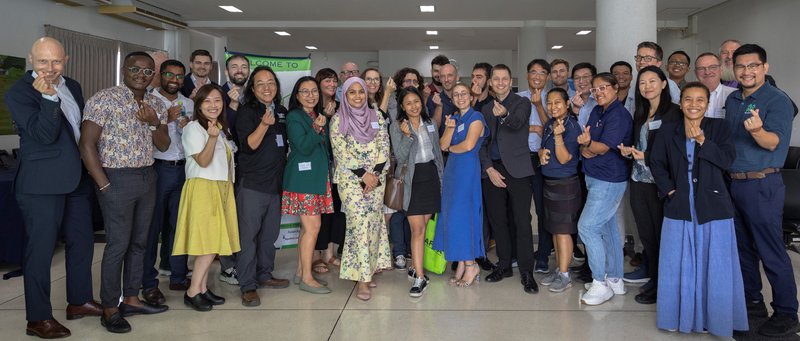
2024 Insect to Feed the World conference
AFFIA hosts the 2024 Insect to Feed the World (IFW) conference. This event is organized every two years by a different entity and AFFIA was selected as the host for the 2024 edition. 2024 IFW is the premier conference for the Insects as Feed and Food sector and it is set to take place from June 19-22 in Singapore, marking its 5th iteration. The international event brings together researchers and industry professionals from around the world to exchange ideas and the latest advancements in the field of insects for feed and food. “The conference will include an integrated exhibition, three days of parallel sessions, as well as networking events and opportunities to tour Singapore’s world-class research facilities,” said Emilie Devic, deputy secretary general at AFFIA.
Aquafeed companies are welcome to join the forum to gain insights into the latest trends and developments in insect feed, including how it can improve the nutritional quality of aquafeeds; form strategic partnerships with insect protein suppliers and other stakeholders; stay informed about regulatory changes related to insect-based ingredients; set commitment to sustainability and responsible sourcing; gain insight into consumer preferences and market demands for sustainable aquafeeds; explore opportunities for innovation in aquafeed product development; understand the cost benefits and economic impacts of using insect protein, among others.
“By attending the forum, aquafeed companies can stay informed, enhance their sustainability efforts, and improve their market position through innovative and responsible practices,” Lee concluded.


